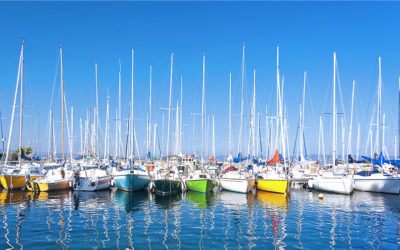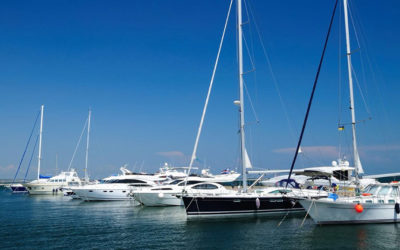From a certain surface area upwards, sheeting a sail requires a certain amount of physical strength. However there are solutions to make these manoeuvres accessible to everyone, including to people with reduced mobility.
Winches have made manoeuvres that once required a whole crew accessible to just one person. Despite that, hauling a rope is sometimes very physical! This is why the main riggers have developed electric solutions that also help with manoeuvres. These can be built-in motors, but the main manufacturers sell conversion kits for most of their models.
If your winches aren’t compatible, you still have the solution of an electric crank, which has the advantage of being able to be used everywhere, no matter what the boat or winch.
1. Why, and who is it for?
The first use you’d think of for this kind of system is to help sheet the genoa sails, which are the ones you have to haul on the most. With experience, in a family or minimal crew, the most practical and comfortable use of motorisation is the halyard winch. This kind of device enables you to easily hoist a heavy sail such as battened mainsails, or even to effortlessly haul up a crew member who needs to do something to the mast head.
In fact, electric help isn’t just useful when you need to manhandle things; you’ll find it especially useful during fiddly cranking. To those who favour “manly” sailing and frown at the prospect of so much help, may we remind you that even big guys get old and that motorisation helps introduce a wider community to take up sailing, including Persons with Reduced Mobility.
2. How does it work?
Each manufacturer has their own system. With Harken, all winch models from 35 to 80 can be equipped. The motor can be mounted below deck, either vertically or horizontally depending on the space available. The fitting is relatively simple since it is the same as the winch. You only need to drill a hole through the bracket to pass the motor shaft through.
It uses relatively low electric intermittently (700 to 2,000 watts), so you don’t necessarily have to install a special battery exclusively for this as long as the boat’s battery is enough. The circuit has a breaker, a relay that also serves as a load limiter, and a control box. This is fixed, wired and only has 2 buttons that correspond to the motor’s rotational direction and thus control the winch’s 2 mechanical gears.
3. Please note, it’s pretty powerful!
It’s this gearing that provides such clout and explains the low electricity use. You have to be careful with your power use, otherwise you may get overwhelmed! Imagine that, when you hoist the main sail, a batten gets caught in a lazy jack… If a crew member who’s sheltered by the hood or with their eyes on the controls doesn’t notice, then the worst could happen! The same goes for the genoa sails, so it’s best to take it slow. You don’t have to run the whole genoa through the pulley on each tack! You have to be deft even so because very few systems allow you to let out slack other than manually. Motorisation helps, but we’re still a long way from sailing at the touch of a button, or where you can adjust the sails automatically with a simple push of your finger!
4. I’d never go anywhere without my crank!
The main limit to motorisation is that it’s fixed. If you want to use it everywhere, then you need as many mounts as winches. The Ewincher crank isn’t constrained in the same way, because it’s useable on any winch, no matter what size, and can be used from one boat to another. It comes in a soft case that contains the battery or batteries, the charger, a 12 V converter and all the accessories, including a blocker and safety leash.
It can be used manually, electrically, or a combination of both. Here again, the buttons reverse the direction of rotation to take advantage of the winch’s gear ratios. Here, you use gradual finger pressure which avoids sending a crew member who isn’t steady on their legs into orbit. In any case, unlike a fixed system, the operator can immediately sense with their hands if it has got stuck anywhere. In addition to these safety features, a mobile application allows the maximum torque to be adjusted and even the tension on the ropes to be measured.
As you can see, the two systems each have their advantages and their basic rates are fairly comparable (approximately €2,600 including tax). It is very likely that in future, these aids will develop further, making life easier for people on yachts, just like electric windlasses, bow thrusters, dinghy engines, etc. All these devices that we could very well do without, but which still make life a lot easier!
This article was written by Olivier Chauvin.

